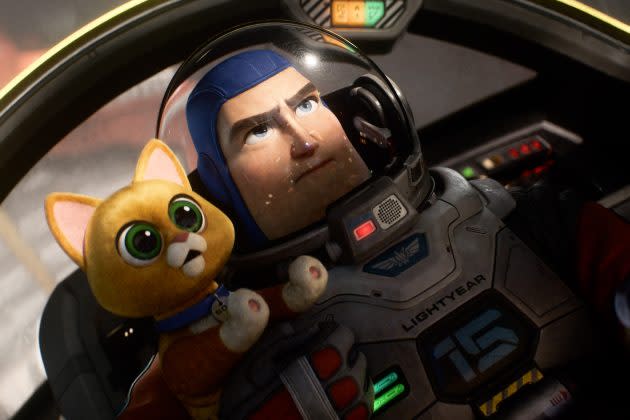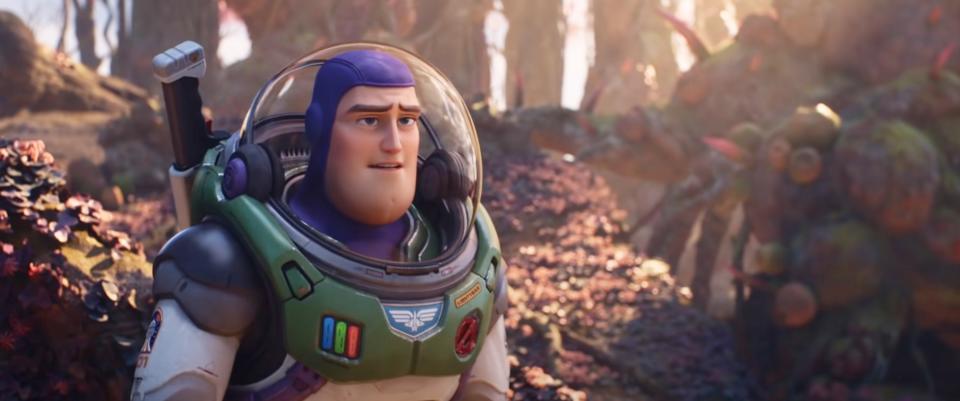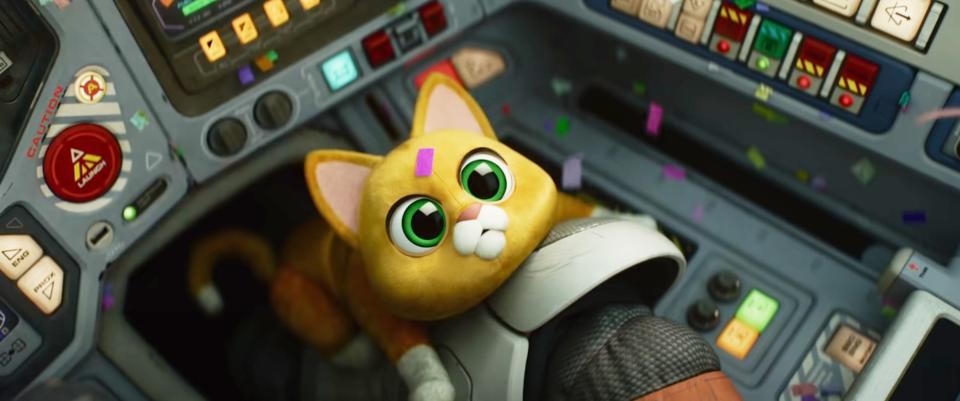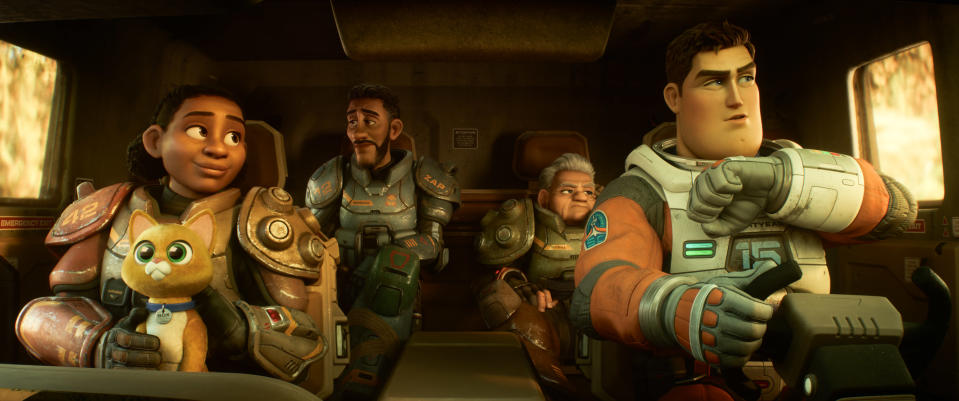‘Lightyear’ Director Angus MacLane On Using An “Echo” Of ‘Toy Story’s Buzz Lightyear As Inspiration
- Oops!Something went wrong.Please try again later.
- Oops!Something went wrong.Please try again later.
- Oops!Something went wrong.Please try again later.

After working on multiple Toy Story films and shorts, director Angus MacLane began to wonder about the inspiration for the character of Buzz Lightyear. Since Buzz, the toy, is based on Andy’s favorite movie, why not make that movie? Lightyear tells the story of Buzz Lightyear, the space ranger, as he spends years trying to return home after being marooned on an unknown planet. When he finally figures it out, he encounters an army of ruthless robots commanded by Zurg. The challenge for MacLane was to create a film that an existing character would be based on, without telling the same story.
Related Story
'Turning Red' Director Domee Shi & Producer Lindsey Collins On Mother-Daughter Relationships And Embracing Your "Inner Beast"
Related Story
James Cameron Intros 'Avatar: The Way Of Water' At London World Premiere: "To Me Tonight Is Not About A New 'Avatar', It's About Cinema" – Watch The Video
Related Story
Disney's Christine McCarthy Emerges As Top CEO Contender To Succeed Bob Iger; CFO Was King Killer Who Took Down Bob Chapek

DEADLINE: When you’re making this film, how do you take Buzz Lightyear, the character from the film Lightyear, and differentiate him from Buzz Lightyear, the toy?
More from Deadline
ANGUS MACLANE: Well, Buzz has a different story function in Toy Story than he does in Lightyear, in the sense that as a side character, he’s allowed to be the sidekick. He’s much more the comic relief and the depth of his emotion doesn’t have to be quite as deep in that film. In Toy Story, Buzz is a character who’s absolutely convinced he’s a space ranger that eventually accepts that he’s a toy and finds value in that. So for Lightyear, what we identified as the unifying trait in Buzz is that the character always had a disagreement over the nature of reality. So even though we weren’t gonna do a movie where he finds out he’s actually a toy, we wanted to have a way to have an echo of that.
DEADLINE: You put a lot of references into this, like blowing into the autopilot like a Nintendo cartridge. Which reference do you think is your favorite?
MACLANE: That particular reference is a lot different than other references because that one is just a reference that says, “I’m old” to anyone that laughs at it. There’s a certain recognition of an era, a time, a way that we dealt with technology through physical means to solve the problem. And I think there’s a retro cassette futurism truth to that moment that is very much when you see it, you recognize that behavior. For those who had played console games, there’s a recognition of the behavior and a warmth to that behavior that produces in some members of the audience a lot of really interesting nostalgia. It’s hard to find those kinds of true jokes. While that is a reference, it’s more of a life reference and a life truth. If comedy is two truths combined together to be a deeper truth, that one I’m fairly proud of. I mean, there’s certainly a lot of references contained in the film, but I never wanted to have references that would stop the movie cold. I think that the cartridge one is a good balance of recognition and nostalgia without overplaying its hand.

DEADLINE: What was the inspiration for Sox?
MACLANE: There’s a wide variety of inspirations for Sox, not least of which is the need for… There’s like a feeling of movies of a certain era of having a cute sidekick. I think that if you look back at any film, regardless of genre, there is usually a cute thing. So, whether or not we would have a cute thing in the movie, I think that was just the way that humans tell stories, eventually they find some cute thing to wedge in the movie. So, why not make that cute thing essential to the movie? I think we can all think of cartoons from our youth that had new characters added that were a younger, cuter version than some of the main characters, and they were just added for laughs or to freshen up things. In looking at those characters, we found that they were most successful when they were not sarcastic and when they were loyal to the hero.
On the physical side, I knew we were gonna have a movie full of humans, so I wanted to have a movement structure and a character that was gonna be really interesting. I really am fascinated by the explosion of animatronic entertainment for children in the early eighties, and how ubiquitous it seemed to be as an acceptable form of entertainment. While there had been people in costumes before, it felt like there were a wide variety of uses both in chain restaurants and amusement parks that would take advantage of animatronics. I never really felt the animatronics were convincing, but they had a charm to their limited movement because that’s all they could do. Similar to Toy Story, where the characters moved with the limitations of their construction, I felt that there was a nice echo, while not a direct lift from Toy Story, to have a toy-like character to be part of Buzz’s world.

DEADLINE: What were the biggest challenges for you on this project?
MACLANE: The pandemic was the hardest thing. Not being able to make the movie in the same place and to have the sharing of ideas just required a different type of adjustment in making a movie. I would say one of the nice things was the ability to draw over anything in any Zoom meeting because then it allowed nonverbal communication and documentation of those elements after the fact. It also allowed for more people to be in more meetings from a learning perspective. But on an execution level, the challenge of the movie is you’re making an adaptation of a character that the majority of your audience knows and has strong feelings about. You have to utilize a very limited lore, so it has so much room to wrinkle and disappoint. The way that we looked at it was like a Spider-Man or a Batman film. We’re making one statement, one point of view, and trying to make it cohesive. I think taking Buzz from a side character to a main character was a real challenge because it’s easier to have him come in with a quip and to be a comedy sidekick than for the majority of the emotional pathos to be derived from his actions. His character is a challenge, to have someone self-aware who is not self-aware.
Best of Deadline
Sign up for Deadline's Newsletter. For the latest news, follow us on Facebook, Twitter, and Instagram.

